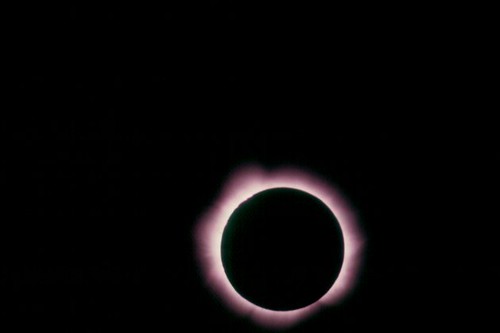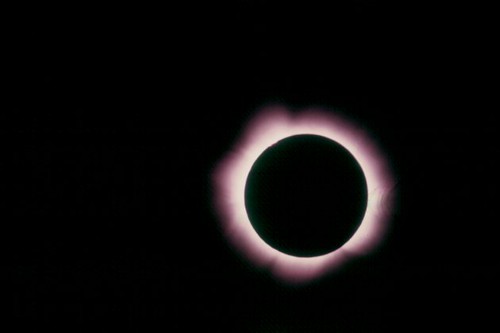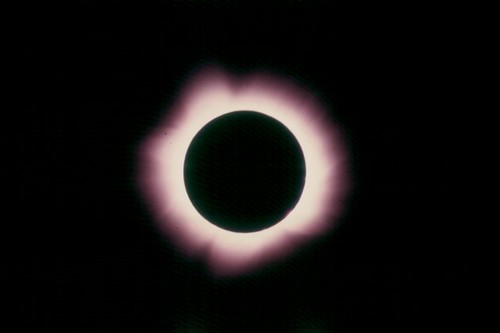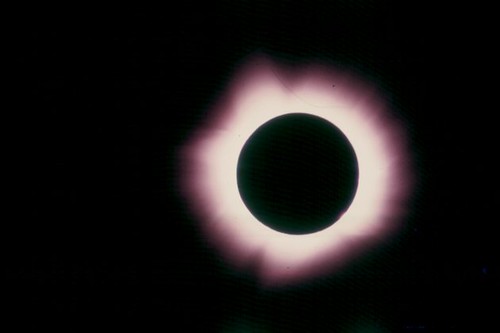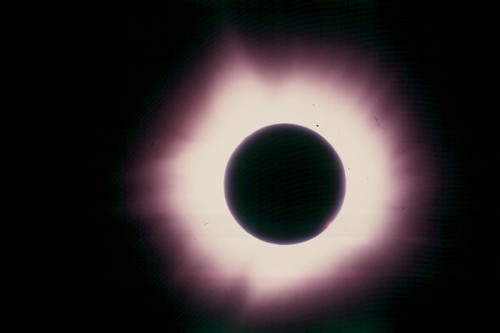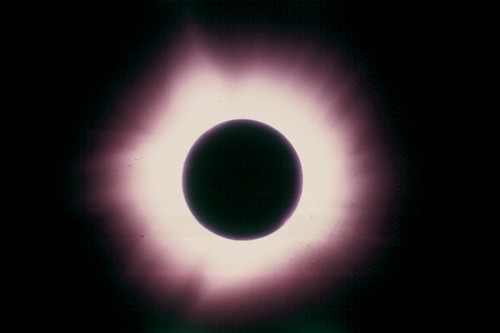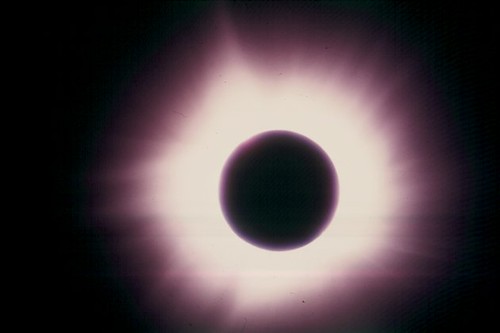Gerard M. Foley
Travel & Photography Collection
Solar Eclipse of March 7, 1970
An eclipse experience of my life was on March 7, 1970 in Williamston, NC. The track of this eclipse began in the Pacific, swept northeast across Mexico and the southern United States to go into the Atlantic near Newport News, VA. Eclipse tracks are highly varied, but all eclipses start in the west at dawn and end in the east at sunset, usually nearly half way around the world from the start. The elevation of the sun and moon at total eclipse is highest near the center of the track, near local solar noon. The latter differs from local clock time according to the customs of the location.
The part of the track in North Carolina and Tidewater Virginia for this eclipse gave very high elevations at totality. The weather on the morning of eclipse day at Williamston, NC, was perfect, with not a cloud in the sky, and very little haze. To photograph the eclipse I used a Vivitar lens of 800mm focal length with an aperture of f8 (thus the objective is 100 mm or 4 inches diameter), coupled to a Pentax Spotmatic single lens reflex camera. The film was Kodak Ektachrome (probably ISO 64). I used exposures of 1 second, 1/2 second, 1/5. 1/20, 1/30, 1/50 and 1/100. I recently scanned these slides with a Hewlett-Packard PhotoSmart scanner to produce 1560x1040 pixel images. The following picture was produced by assembling all of these exposures using the layering feature in PaintShopPro 5.03. The overlaid images were used with 72% opacity, and assembled on the background of the one second exposure.
The slides are unaccountably reddish, so the scanned images were modified in gamma, brightness, contrast and color. Here are 630x420 images of the individual exposures which were combined to make the first image.

